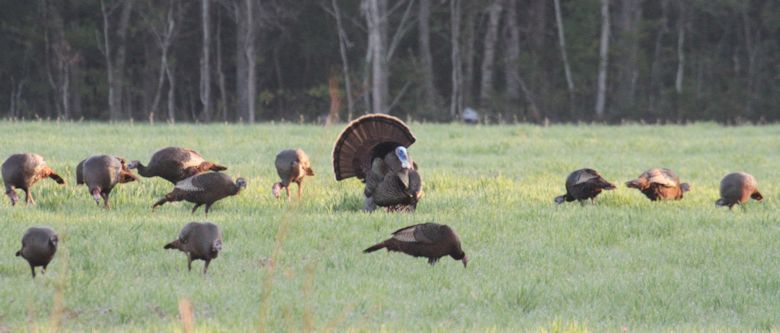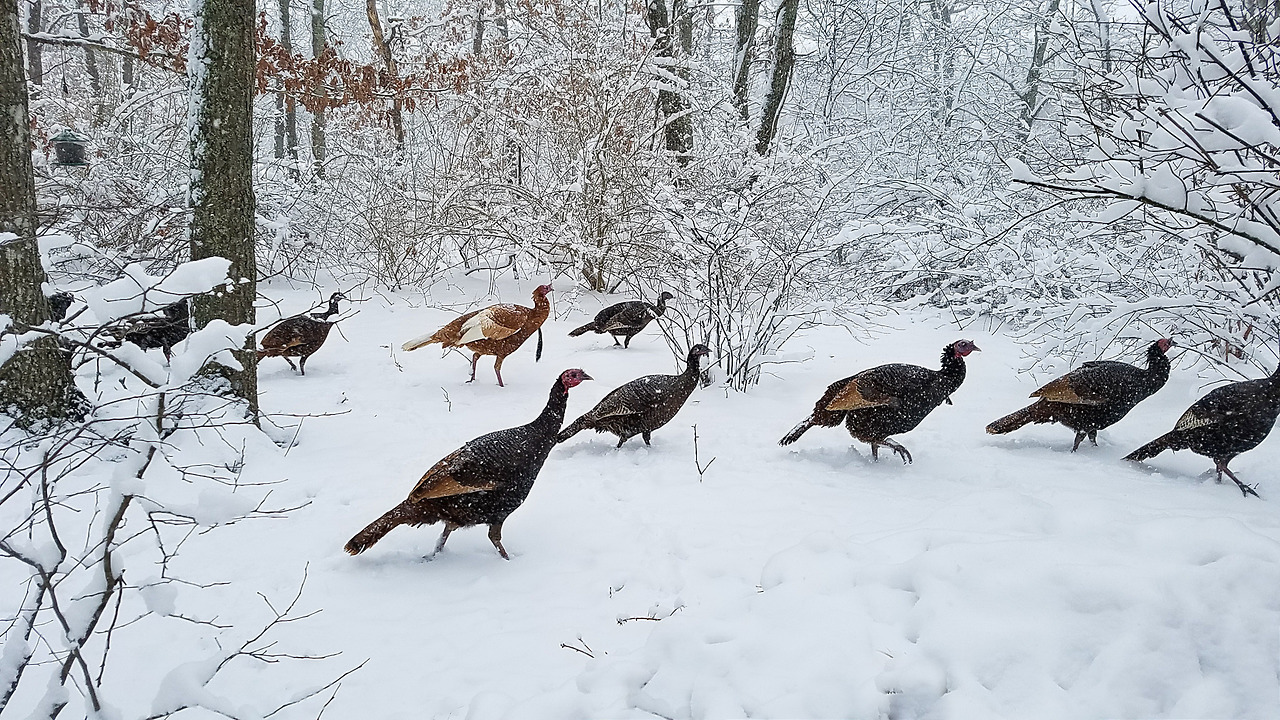

He will strut back and forth, hissing and dragging his wingtips on the ground.
#WILD TURKEY FLOCKS FULL#
The strides of a gobbler running at full speed can measure four feet. Both genders have a snood (a dangly appendage on the face), a wattle (the red dangly flesh under the chin), and only a few feathers on the head. An adult hen weighs 8 to 12 pounds and has no beard or spurs.He also has sharp spurs on his legs for fighting. An adult gobbler weighs 16 to 23 pounds and has a beard of modified feathers on his breast that can reach seven inches or more in length.The eggs will incubate for about 28 days before hatching. When a hen is ready to nest, she will lay 10 to 14 eggs, laying one per day over a two-week timeframe.They have continually inhabited Mexico, the United States, and Canada. Turkeys are native to only North America.They compete with the other males who come calling on the females. Male turkeys are called "gobblers" after the gobble call they make to introduce themselves to the females.

The female's excrement is shaped like the letter "J." A turkey's gender can be determined from its droppings - males produce spiral-shaped excrement.Turkeys can run up to 25 mph and up to 55 mph.Today the state has an abundant supply of wild turkeys across the state. Some birds were trapped in areas where they were abundant and moved to suitable but unoccupied habitats to speed up the dispersal of the bird. In the 1950s, the commission established hunting seasons for the birds. Beginning in the 1930s, the Game Commission also established a farm for breeding a new stock of turkeys. The newly formed Pennsylvania Game Commission restored the population through several steps.įirst, the commission set up refuges, and add new laws that were enforced to protect the remaining local turkey populations. In 1900, few were left in the eastern United States, with an estimated 3,500 to 5,000 birds in Pennsylvania. Here in Pennsylvania, we almost lost all the wild turkeys due to farming, logging, hunting, and habit destruction. Yet, a few will also attempt to sneak quietly into the underbrush in the area. Their heads will usually be extended on long serpentine necks. The turkeys jump and flap upward on loud wings or run full tilt. When a walker, runner, naturalist, or bike rider encounter one of these flocks close up, they are treated to a spectacle as the flock breaks up.

Presque Isle State Park has four or five distinct flocks. The wild turkey is a shy resident of Pennsylvania's woods and mountains. Watch Video: Game wardens use nets to trap turkeys for health check


 0 kommentar(er)
0 kommentar(er)
